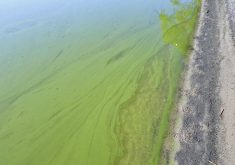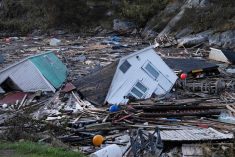Canadians are worried as they look ahead to summer. Forest fires in British Columbia are expected to begin earlier and last longer this year and the Prairies are still expecting continued drought.
Other Canadians are also bracing for or are already experiencing extreme flood conditions.
In the lead-up to the federal government’s 2024 budget, there was hope for investments in water management and water-related infrastructure to help address some of these issues. However, as we examine the 2024 budget — with a particular focus on the key issues of drought, floods and water supply — we found that most of these hopes have been misplaced.
Read Also

Calling all Co-operator readers
Hey farmers, we want to hear your Manitoba Co-operator stories: the articles that stuck out, the farm history you watched on our pages.
Fires and droughts
The budget is light on both details and critical infrastructure investments regarding management of fires and droughts. Some provinces are attempting to address the issues, but there’s a lack of consensus on the validity of their approaches.
Large-scale water management infrastructure is vitally important in Western Canada, but there is no commitment to evaluating or building any of these types of systems within the 2024 budget.
Given the recurring jurisdictional spats between Ottawa and the provinces over water management issues, this lack of commitment to large-scale infrastructure is perhaps unsurprising. That doesn’t make it any less disappointing.
The 2024 budget also failed to invest in critical flood control and resiliency infrastructure for communities that are frequently exposed to seasonal flooding. It did propose almost $7 million over five years for the Meteorological Service of Canada’s early warning system for extreme weather events, with a focus on floods and storm surges.
These are important investments. The costs of weather and climate-related damage are increasing significantly. It’s estimated that insured losses in Canada exceeded $3.1 billion in 2023.
Additionally, the initiation of a national flood insurance program to the tune of $15 million is a welcome investment. However, this type of policy approach doesn’t address the root causes that result in the occurrence of floods. It just focuses on paying for damages after floods have happened.
Ultimately, what is perhaps most striking about the issue of floods in the 2024 budget is how little attention they received and how much of it may be buried under housing-related budget measures.
Precedent
There have been investments in water in recent budgets. A year ago, during a visit by U.S. President Joe Biden, the Government of Canada announced such a measure tied to the 2023 budget. Canada committed $650 million over 10 years to protect the Fraser River, the Mackenzie River, Lake Winnipeg, Lake of the Woods, Lake Simcoe, the St. Lawrence River and the Great Lakes.
Previous budgets have invested in water management through green infrastructure investments that have included the rehabilitation of storm-water systems and restoration of wetlands.
But sustained investments are needed to both protect and preserve water systems and adequately prepare communities for extreme weather events through improved resiliency.
In the end, this budget did little to address the concerns many Canadians have about climate-related impacts and water security.
To keep communities across the country safe, more investments into water-related infrastructure and — more importantly — ambitious policy development are critical to ensure the health and well-being of all Canadians.
There must be investments in sustainable water-use programs and timely water measurements. Canada also urgently requires a registry of water rights and standards for water accounting that inform transparent decision-making, similar to the National Water Initiative in Australia.
These investments are an essential step in allowing us to begin triaging the most important climate-related impacts to infrastructure before it’s too late.
The above being said, infrastructure alone won’t solve the complex issues of climate-related water management. Long-term water sustainability requires innovative policy approaches aimed at addressing inequity.
This includes a shift in how we approach water governance from a system of individual water ownership and licensing, as is the case in some provinces, to a more collective approach.
Substantial investments, alongside innovative policy discussions, perhaps guided by the new Canada Water Agency, are extremely important, but noticeably absent from the federal budget. This must change if we are to get serious about Canada’s long-term water security.
– Kerry Black is Assistant Professor Schulich School of Engineering at the University of Calgary and David Barrett is a Laboratory Research Associate in the Faculty of Science at the University of Calgary.This article first appeared in the Conversation, by Reuters.















